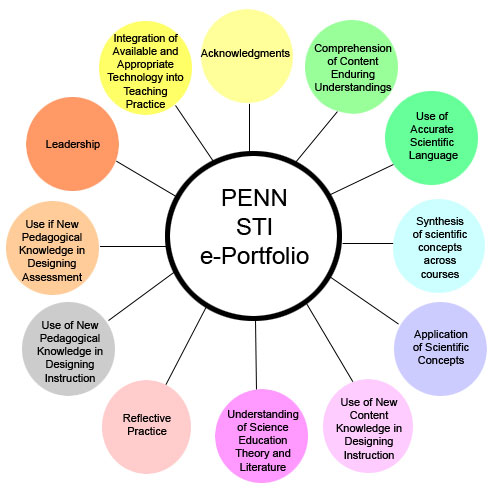Please click on images for a larger view.
Please click on images for a larger view.
| Later
Evidence: |
|||||||
|
DECEMBER
2007
|
|||||||
|
The excerpts from this video show the use of small peer groups in my instruction. I began this lesson with a DO NOW (review and anticipatory set). I then placed students in groups of three and had them work through a POGIL-like activity that guided them through the steps of writing formulas and dot structures for ionic compounds. For the majority of the period, students worked in groups while I walked around making sure that students were on task and answering questions when necessary. I then selected members from each group to put the answers to the exercises and problems on the board. We then went over any answers that caused conflict as a class. This evidence shows growth because my pedagogy has shifted from a more student-centered pedagogy. I am not the central dispenser and organizer of information; rather I facilitate and guide students as they process the information with their peers. TEACHER INVOLVEMENT: active supervision/ management, occasionally the focus of instruction, but more for clarification and facilitation of discussion STUDENT INVOLVEMENT: active, high levels of peer interaction, interactions between groups and me when needed |
|||||||
|
EVIDENCE
#2:
The use (part 1) and creation (part 2) of POGIL worksheets
|
|||||||
|
Part 1: Use
(The following are from www.pogil.org)
While I do not have video footage of my lesson, the first piece of later evidence shows one of the many POGILs I integrated into my teaching. I broke students down into groups of three (of mixed ability) and also arranged the desks to signal a change from traditional lecture and to facilitate grouping. I began any conceptual aspect of the equilibrium unit with a POGIL, allowing 1 period for the completion and review of each one, so that students would have adequate structure and time for the process of concept development. During the POGIL, I walked around making sure the students were on task and answering questions about wording. I deliberately refrained from answering conceptual questions unless all members of the group were having difficulty understanding a concept--whenever possible, I would point them toward the area of the model that would help them find the answer themselves. I did continue to give small lectures summarizing the concepts encountered in the POGIL or teaching the math related to equilibrium. I also continued to use drill and application problems at the end of the learning of each concept, but I conscientiously made sure that I had provided more time and support in my lesson so that students could appropriately formulate their ideas before being asked to apply them. While I do not integrate group work and inquiry-based tools in my teaching all the time, I have definitely increased in my use of these techniques (particularly in my use of POGILs) and in my desire to further re-evaulate and revamp my practice to make it more inquiry-based (It does take time, however!). TEACHER INVOLVEMENT: shift from central role dispensing information to a more managerial role (maybe 30-40% of the time), helped students fine-tune understanding, making sure students were on task, and finally creating problems that gave students opportunities to test and apply knowledge STUDENT INVOLVEMENT: active, significant levels of peer-to-peer instruction, typically on task and engaged |
Part 2: Creation
(The following are my own resources)
After having used POGILs throughout my school year and having acquired a better sense of the type of POGIL that works best for my students, I have gained the confidence to create my own POGIL resources and integrate them into my teaching. |
||||||
| EVIDENCE
#3: The use of interactive applets in instruction
|
|||||||
|
PIECE
1.
Applet use in tandem with pre-made resources/ lecture (click on pictures to link to the PHeT site)
The second piece of evidence shows the applets I used in my classroom (with a POGIL or in conjunction with a lecture) to help students visualize the submicroscopic interactions behind many of the concepts and relationships they were learning. Prior to using applets in my instruction, I would try drawing these interactions on the board (an imperfect, static drawing that often did not do justice to the concept) or simply expect that my students could imagine what I was saying. With a POGIL The gas applet provided the perfect information model for the POGIL. Each student completed the POGIL sheet individually (one computer to each student) and then discussed and checked their answers with the two people closest to them. It was fun, interactive, and open-ended (with certain set parameters that helped prevent against the creation of incorrect understandings). I observed that students were engaged and on task since the POGIL demanded that they interact with the model to find the answers. I even witnessed students arguing and discussing their answers to the POGIL when they did not agree, and then returning to the model to verify who had observed the model correctly. It was a beautiful thing! With Lecture I thought the salt and solubility applet more useful as a quick (but informative) visualization of solvation, rather than something I would use (at this point) as the model for a POGIL. Nonetheless, it certainly improved students' ability to imagine ionic compound dissociation! Here is a list of applets by topic (.pdf file with embedded links). |
PIECE
2. Applet use in tandem with my own resources. (click on picture to link to the PHeT site)
After having used
applets and applet POGILs during the school year and having acquired a
better sense of how to integrate them into my teaching, I have gained
the
confidence to create my own applet POGIL resources.
|
||||||
July
1, 2009

